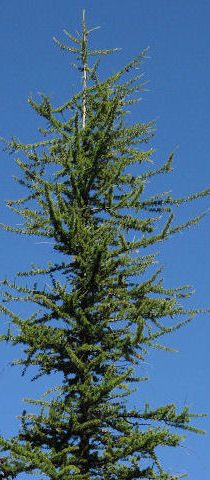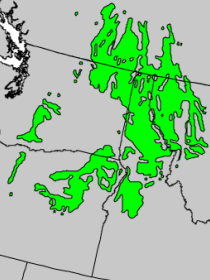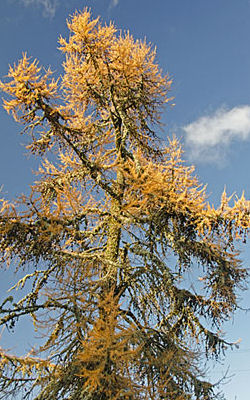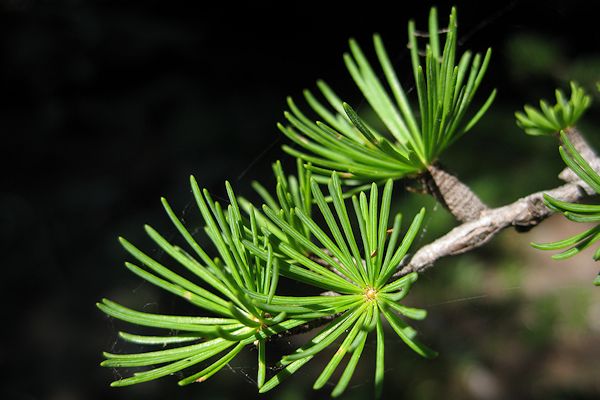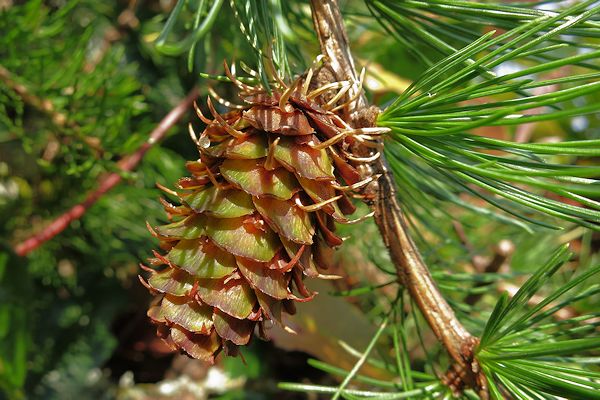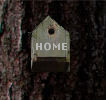 |
Northwest Conifers |
AboutAll ConifersConifersLow-elevationHigh-elevationOthersEast SideSouthwestNon-natives——————Conifer ConesIndexMore Info |
Western Larch – Larix
occidentalis
|
|
Western larch
|
Western larch is a deciduous conifer, losing its needles in the fall. It grows to 150 feet (45 meters). Needles: Western larch is a distinctive tree that is easy to identify. Its needles are less than 2 inches long, but come in bundles like a pine. The needles grow from short spur twigs, with 15-30 needles in each bundle. The tree is even easier to identify in the fall, when the needles turn golden-yellow. In the winter, it is easy to identify because it is the only conifer with no needles. You can see the distinctive spur twigs standing out from each bare branch. Cones: The cones look similar to mountain hemlock cones, but they have distinctive whiskery bracts that stick out beyond the scales. Bark: The bark has gray or brown flaky plates, becoming furrowed on older trees. Where it grows: In the Cascades, western larch grows mostly on the east side at elevations up to 6000 feet (1800 meters). It also grows in the mountains of northeastern Oregon and Washington, and in northern Idaho and western Montana. Western larch at Hoyt Arboretum Similar tree: Alpine larch grows in the North Cascades of Washington but is missing entirely from the Oregon Cascades. It usually grows at elevations higher than western larch, near the timberline. You can distinguish these two species by looking at the shape of the needles. Western larch needles are 3-sided, while alpine larch needles have 4 sides. Also, western larch cones connect to the branch on short stalks, while alpine larch cones are nearly stalkless. Uses: Western larch is made into lumber used for framing and finishing. It's also used for pulp and firewood. Names: Occidentalis means "western," and Larix, translates to "larch." It's a rare occasion where the scientific and common names match. Other common names: Tamarack, hackmatack, and mountain larch.
Fall colors |
|
© 2011 Ken Denniston

